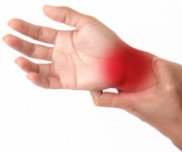Tennis Elbow Anatomy
Tennis Elbow, or Lateral Epicondylitis which is a form of tendonitis, occurs when tendons that attach to the lateral epicondyle of the elbow are too tight or restricted, causing irritation. This bony attachment point is located on the top of the forearm (in line with the back of the hand) near the elbow. It is the bony point that can be felt about one inch away from and on top of the point of the elbow.
Several muscles attach to the lateral epicondyle. Two of the major muscles that attach there are the Anconeus muscle and the Supinator muscle. These two muscles rotate the forearm to a palm-up position. A typical example of this motion would include twisting the forearm to carry a tray.
Another group of muscles that are implicated in cases of Tennis Elbow or Lateral Epicondylitis are some of the extensor muscles. The extensor muscles lift the fingers or wrist away from the palm toward the back of the hand. Constant bending of the wrist in this direction, especially when it is associated with strain of any kind, can often be responsible for the development of Tennis Elbow (Lateral Epicondylitis). A common example of this type of stress is when a computer user rests their wrists on a wrist rest or on the desk as they type, allowing the wrists to sink toward the desktop.
To learn more about Tennis Elbow (Lateral Epicondylitis), visit the following sections:
Tennis Elbow Symptoms
Tennis Elbow Self Care
Click the block below that most closely matches your injury for more information and to find the Toolkit we offer to help you in your recovery.








